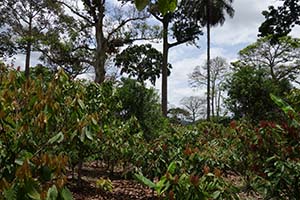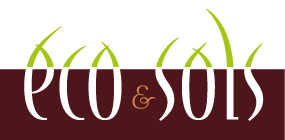 Beyond climate, Soil Carbon sequestration to sustain tropical family farming
Beyond climate, Soil Carbon sequestration to sustain tropical family farming
SoCa project considers soil and carbon sequestration for its multiple benefits to Society. Soils may constitute a major carbon (C) sink due to plant photosynthesis and the subsequent transfer of C to soils by living and dead organic matter (OM). Managing the soil functions that affect the potential for C sequestration could support both climate change mitigation and adaptation, and a sustainable plant productivity for global food security. This is in line with the 4 per 1000 initiative, Soils for food security and climate. The potential of soil to sequester C depends on many factors such as climate and soil type, land‐use and management, soil biotic activities, operating across scales in time and space.
Specific management practices can be proposed to maintain or enhance soil C sequestration in agricultural soils at local scales. These practices, such as agroforestry, permanent cover cropping or organic residue management, target optimal plant productivity through nutrient management, reducing erosion loss and increasing C inputs to the soil.
At the same time, farmers need to adopt the identified practices and this calls for more research on multiscale governing mechanisms. Unfortunately, research often limits efforts to C cycle alone. As C cycle clearly depends on nutrient availability, especially nitrogen (N) and phosphorus (P), a greater understanding of C storage and dynamics in soil will be successful only if CNP couplings are considered. Secondly, the fate of organic matter in soil is regulated by soil organisms whose functional diversity also depends on agricultural practices. Such data are currently lacking for tropical farming systems while it may have important implications for global strategies for soil C sequestration to restore soil fertility and to help with climate change mitigation and adaptation.
Aims
- to better understand how N & P availability in different soils under different climatic conditions and cropping systems affect soil C sequestration; and propose biological indicators of it;
- to support farmers in improving and innovating their management practices for a triple win (food security, climate change mitigation and adaptation);
- to inform various audiences about environmental co‐benefits of proper soil managements.
Strategy
The SoCa project will consider smallholder agricultural systems of the sub‐Saharan Africa (SSA), ranging from annual staple crops association to complex agroforestry systems, as good candidates for C sequestration. In addition, studied sites are along a climatic gradient to tackle the adaptation issue.
The first step of the project will target situating the C sequestration issue within a shared understanding across actors and countries. A diagnosis analysis of soil C storage, nutrient (N, P) dynamics and greenhouse gas (GHG) emissions will be realized taking advantage on the consortium members’ expertise. These results along with collected information on socio‐economic environments and performances of agricultural systems will complete the database of the CaSA network in which several partners are already involved.
The second step will characterize soil ecological processes in fields with different organic matter and nutrient fluxes under different soil, climate and plant system conditions.
The third step will focus on estimating C footprint of farming systems at larger scales using TropiC Farm or Ex‐ACT tools
Studied sites
Benin: Oil palm‐based systems cultivated by smallholders on sandy to loamy nitisols in South Benin;
Cameroon: Diversified cacao‐based agroforestry systems, along a climate gradient from Bokito to Ngomedzap;
Côte d’Ivoire: Cocoa‐fruit trees intercropping in the Centre–West region of Côte d’Ivoire (Garango‐ Bouaflé) cultivated on sandy‐clayey ferralsols;
Madagascar: From mixed cereal‐legume to intercropping with trees; along a climate gradient from the Malagasy Highlands (Itasy and Analamanga regions) through Moramanga to Atsinanana on the Eastern coast.
Date
2017-2020
Partners
- CIRAD, UMR System
- LMI Iesol, « Intensification Ecologique des Sols Cultivés en Afrique de l’Ouest »
- ICRAF (World Agroforestry Centre, Cameroun)
- IRAD (Institut de Recherche Agricole pour le Développement, Cameroun)
- Université d’Antananarivo (Madagascar)
- LRI (Laboratoire des Radio Isotopes, Madagascar)
- INRAB (Institut National Recherche Agronomique du Bénin)
- CNRA (Centre National de Recherche Agronomique, Côte d’Ivoire)
- IITA (International Institute of Tropical Agriculture, Ouganda)
Funds
Fondation BNP PariBas
Contact and Informations
Lydie Lardy, Eco&Sols, IRD Montpellier






